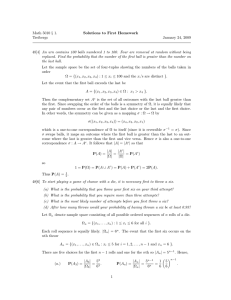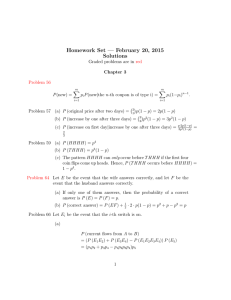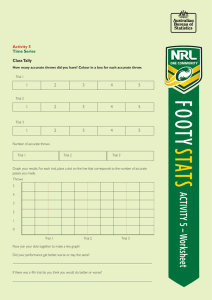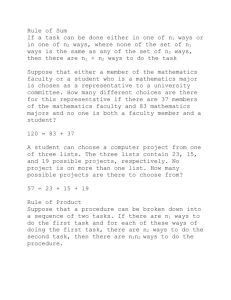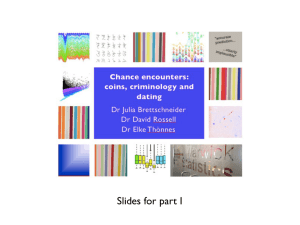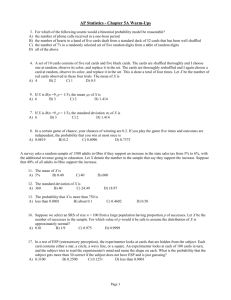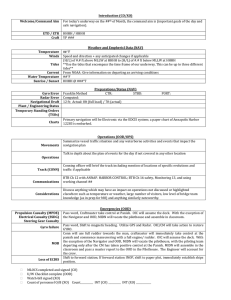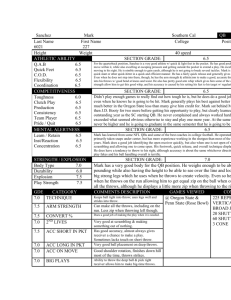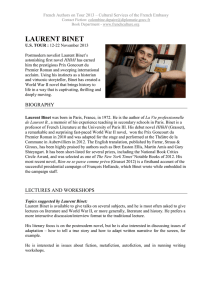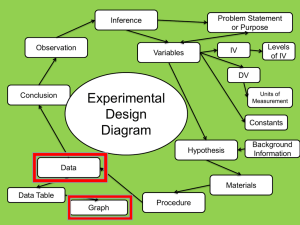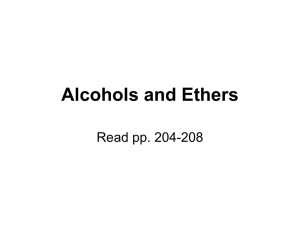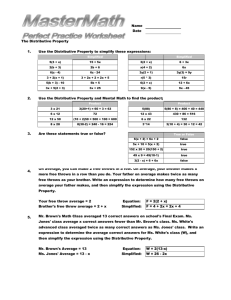5010 solutions, Assignment 1. Chapter 1: 1–4, 6–11, 15, 19,... 1. 4/52.
advertisement
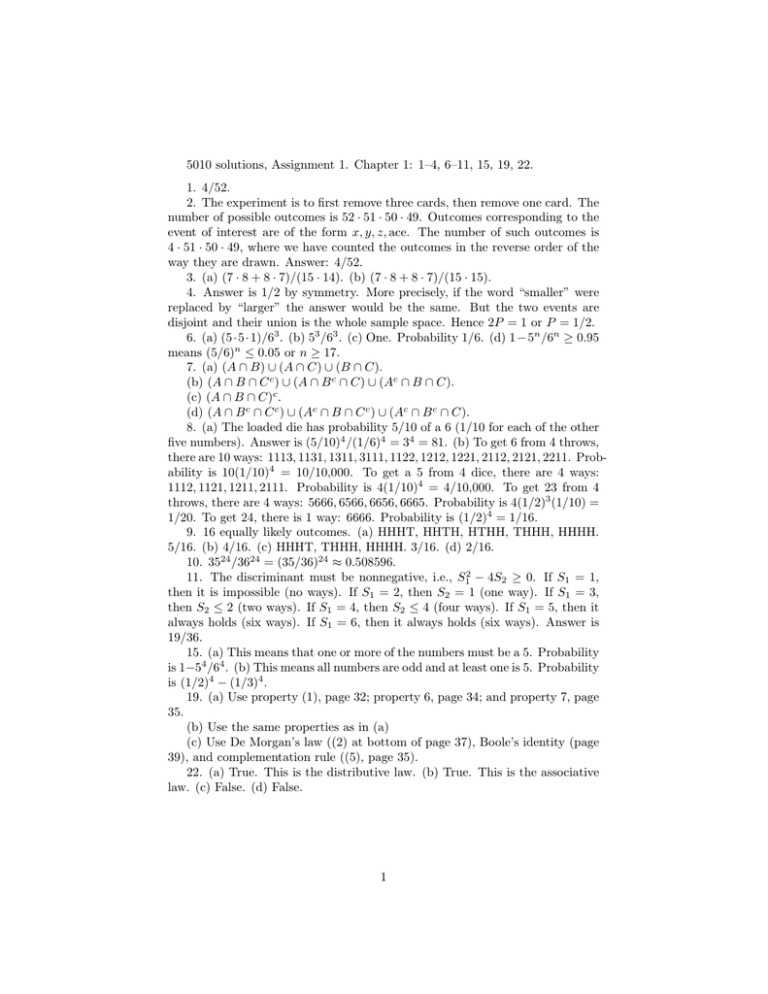
5010 solutions, Assignment 1. Chapter 1: 1–4, 6–11, 15, 19, 22. 1. 4/52. 2. The experiment is to first remove three cards, then remove one card. The number of possible outcomes is 52 · 51 · 50 · 49. Outcomes corresponding to the event of interest are of the form x, y, z, ace. The number of such outcomes is 4 · 51 · 50 · 49, where we have counted the outcomes in the reverse order of the way they are drawn. Answer: 4/52. 3. (a) (7 · 8 + 8 · 7)/(15 · 14). (b) (7 · 8 + 8 · 7)/(15 · 15). 4. Answer is 1/2 by symmetry. More precisely, if the word “smaller” were replaced by “larger” the answer would be the same. But the two events are disjoint and their union is the whole sample space. Hence 2P = 1 or P = 1/2. 6. (a) (5 · 5 · 1)/63 . (b) 53 /63 . (c) One. Probability 1/6. (d) 1 − 5n /6n ≥ 0.95 means (5/6)n ≤ 0.05 or n ≥ 17. 7. (a) (A ∩ B) ∪ (A ∩ C) ∪ (B ∩ C). (b) (A ∩ B ∩ C c ) ∪ (A ∩ B c ∩ C) ∪ (Ac ∩ B ∩ C). (c) (A ∩ B ∩ C)c . (d) (A ∩ B c ∩ C c ) ∪ (Ac ∩ B ∩ C c ) ∪ (Ac ∩ B c ∩ C). 8. (a) The loaded die has probability 5/10 of a 6 (1/10 for each of the other five numbers). Answer is (5/10)4 /(1/6)4 = 34 = 81. (b) To get 6 from 4 throws, there are 10 ways: 1113, 1131, 1311, 3111, 1122, 1212, 1221, 2112, 2121, 2211. Probability is 10(1/10)4 = 10/10,000. To get a 5 from 4 dice, there are 4 ways: 1112, 1121, 1211, 2111. Probability is 4(1/10)4 = 4/10,000. To get 23 from 4 throws, there are 4 ways: 5666, 6566, 6656, 6665. Probability is 4(1/2)3 (1/10) = 1/20. To get 24, there is 1 way: 6666. Probability is (1/2)4 = 1/16. 9. 16 equally likely outcomes. (a) HHHT, HHTH, HTHH, THHH, HHHH. 5/16. (b) 4/16. (c) HHHT, THHH, HHHH. 3/16. (d) 2/16. 10. 3524 /3624 = (35/36)24 ≈ 0.508596. 11. The discriminant must be nonnegative, i.e., S12 − 4S2 ≥ 0. If S1 = 1, then it is impossible (no ways). If S1 = 2, then S2 = 1 (one way). If S1 = 3, then S2 ≤ 2 (two ways). If S1 = 4, then S2 ≤ 4 (four ways). If S1 = 5, then it always holds (six ways). If S1 = 6, then it always holds (six ways). Answer is 19/36. 15. (a) This means that one or more of the numbers must be a 5. Probability is 1−54 /64 . (b) This means all numbers are odd and at least one is 5. Probability is (1/2)4 − (1/3)4 . 19. (a) Use property (1), page 32; property 6, page 34; and property 7, page 35. (b) Use the same properties as in (a) (c) Use De Morgan’s law ((2) at bottom of page 37), Boole’s identity (page 39), and complementation rule ((5), page 35). 22. (a) True. This is the distributive law. (b) True. This is the associative law. (c) False. (d) False. 1
